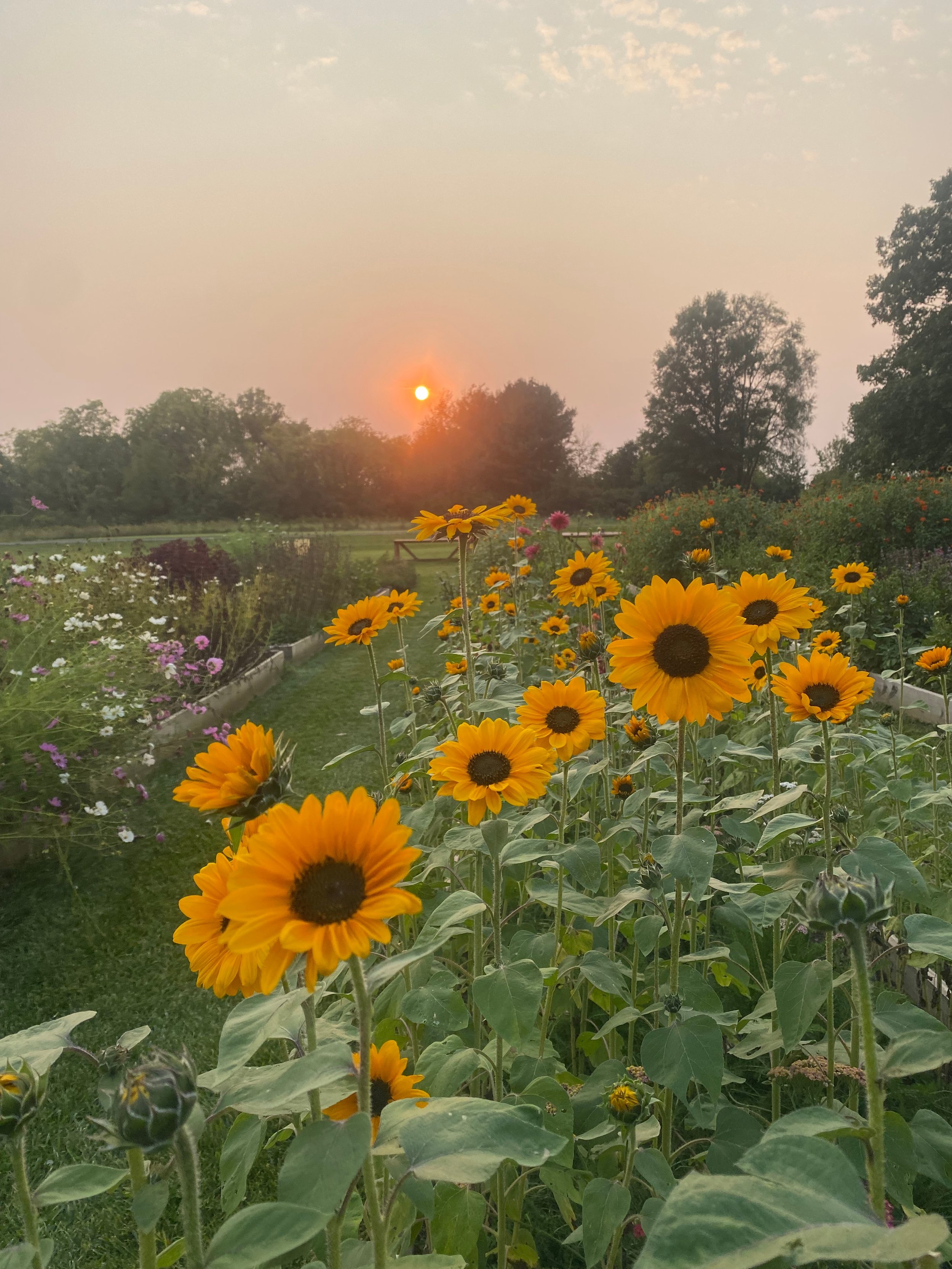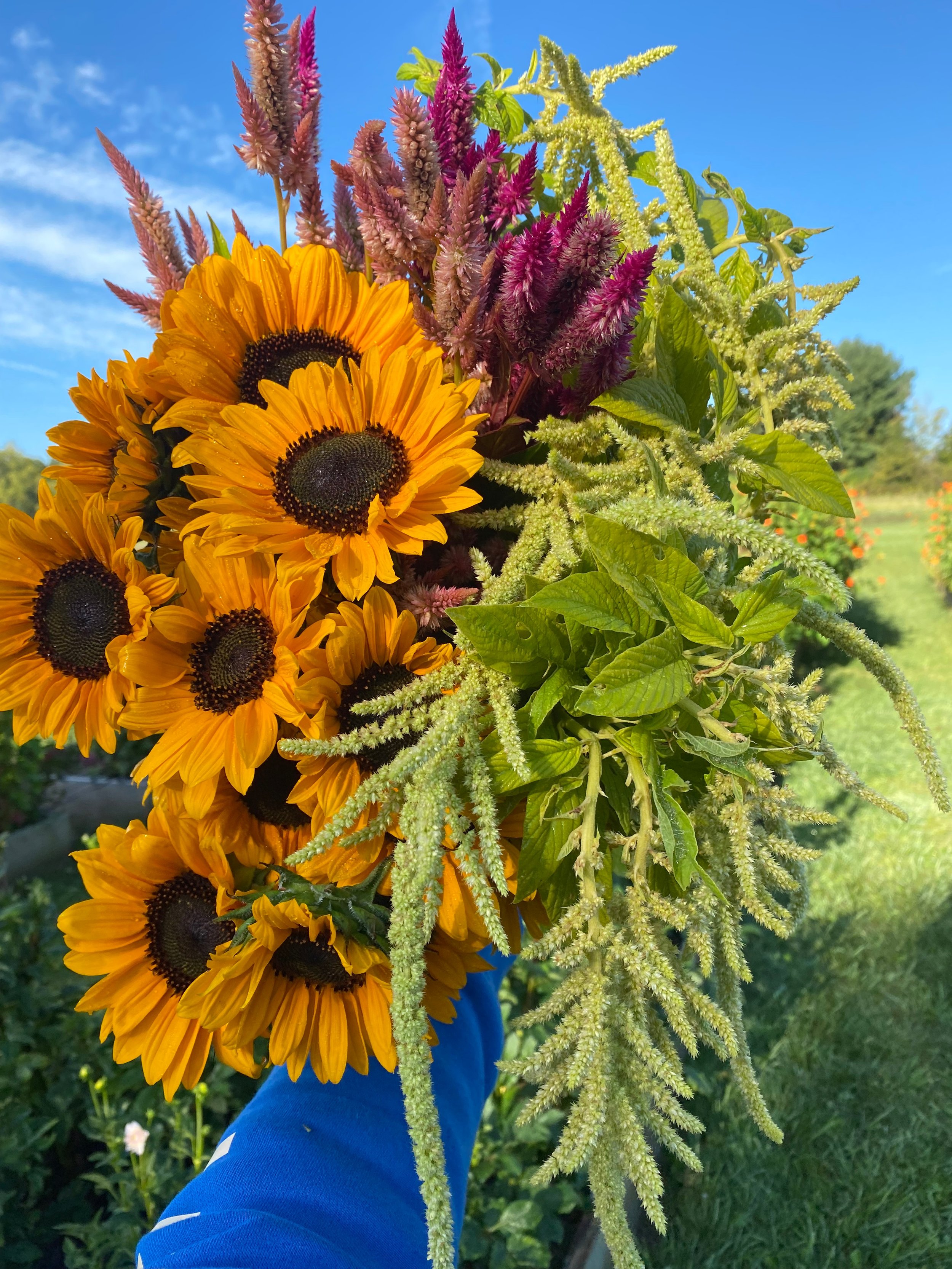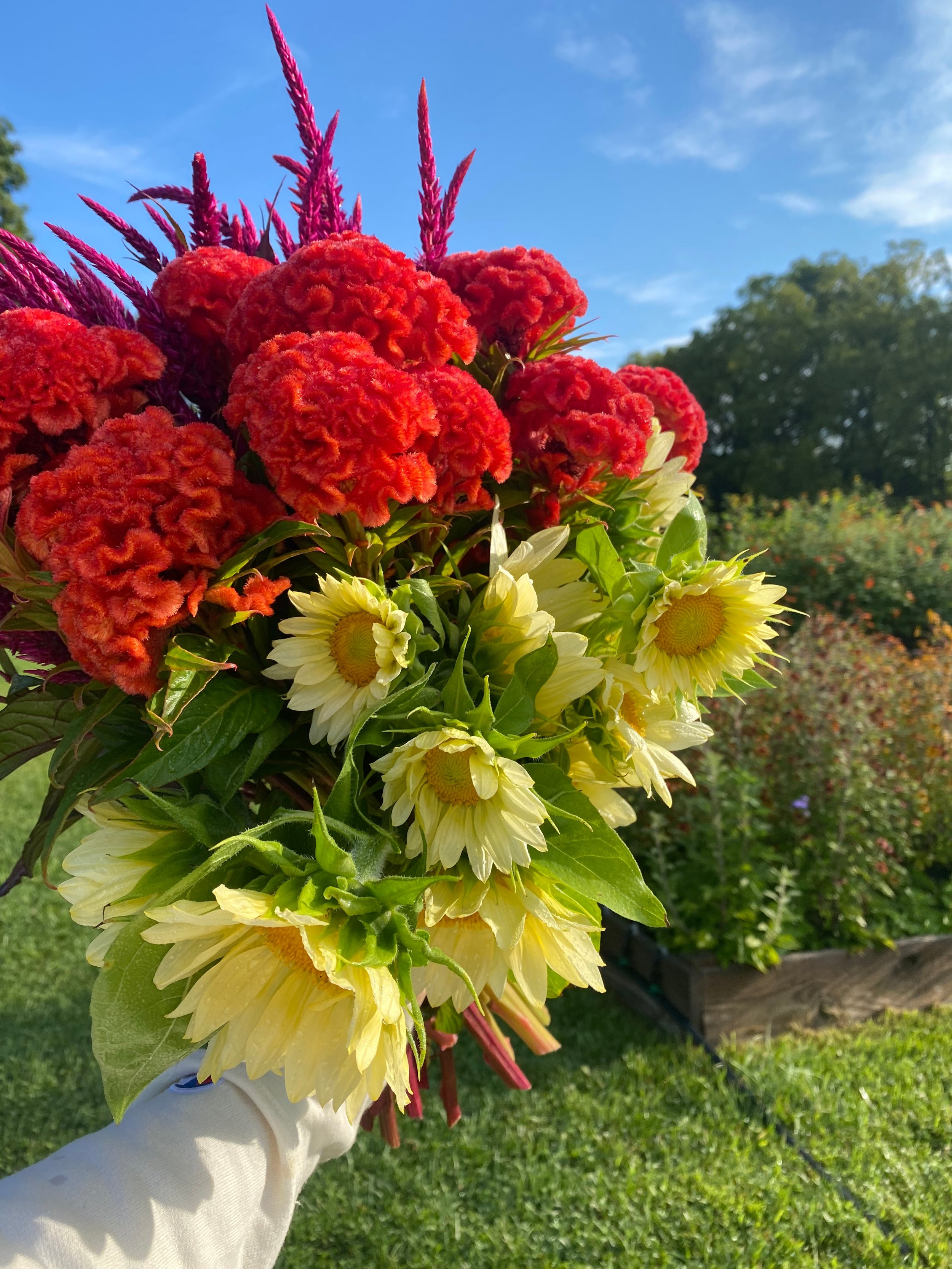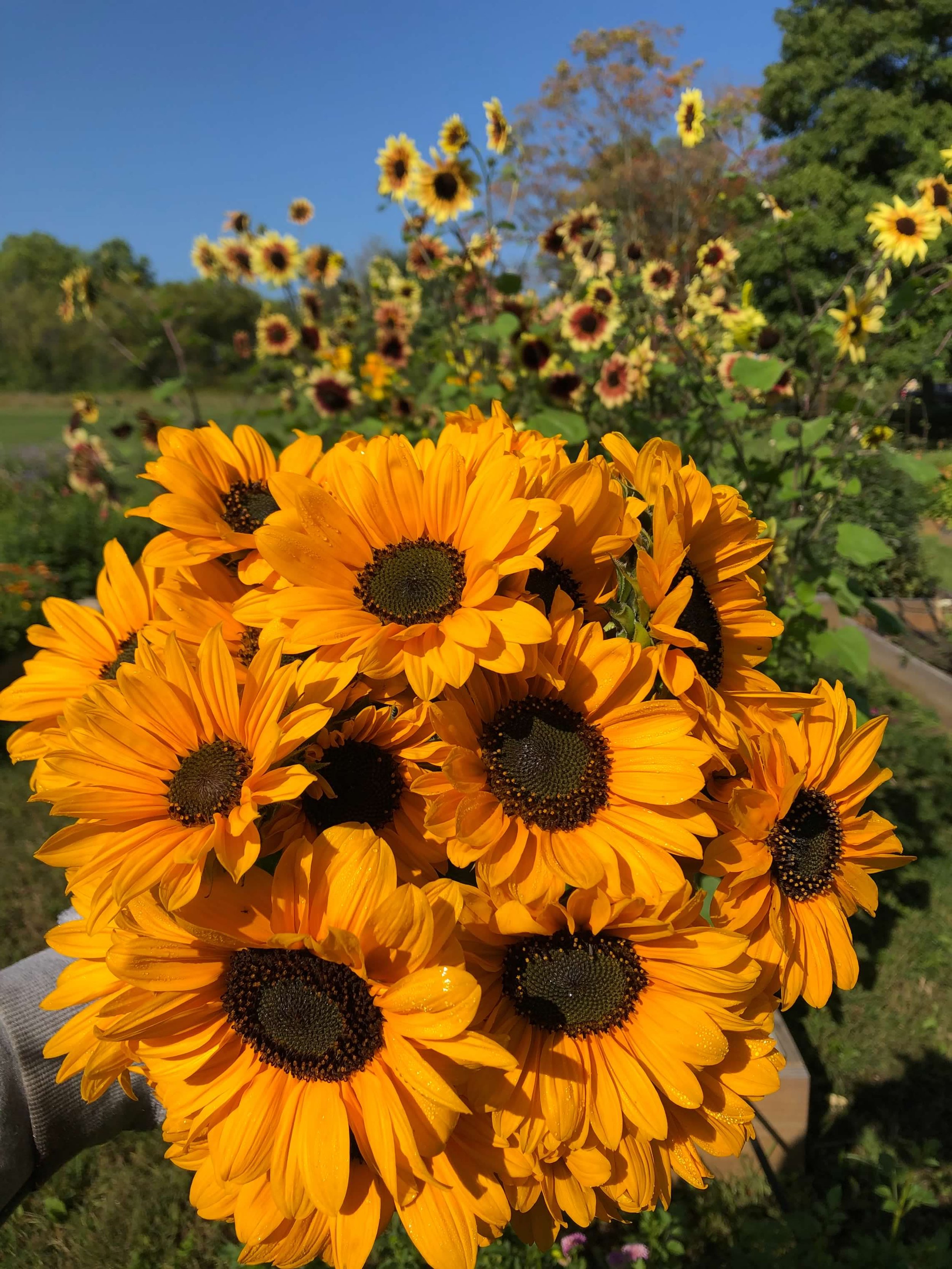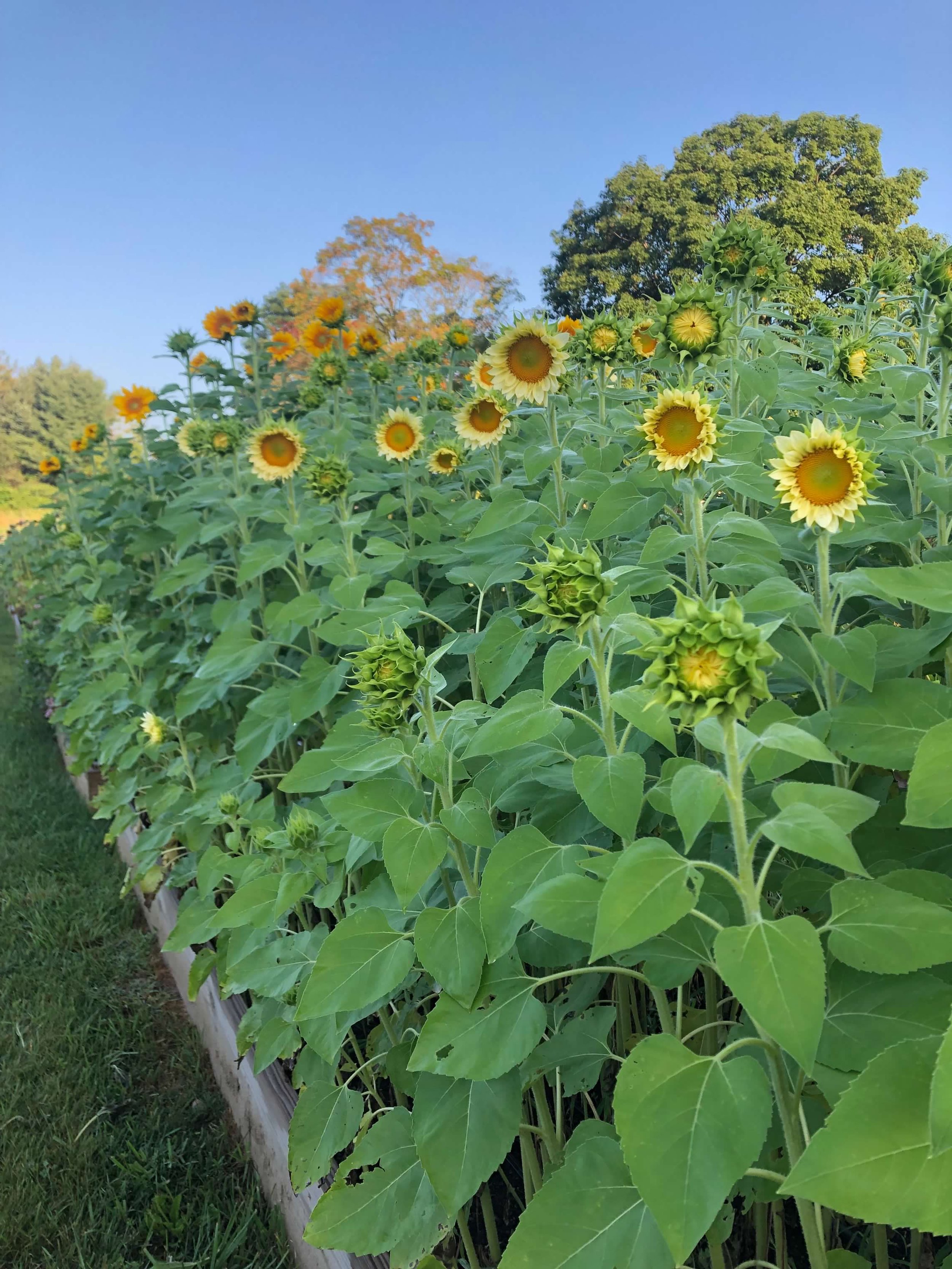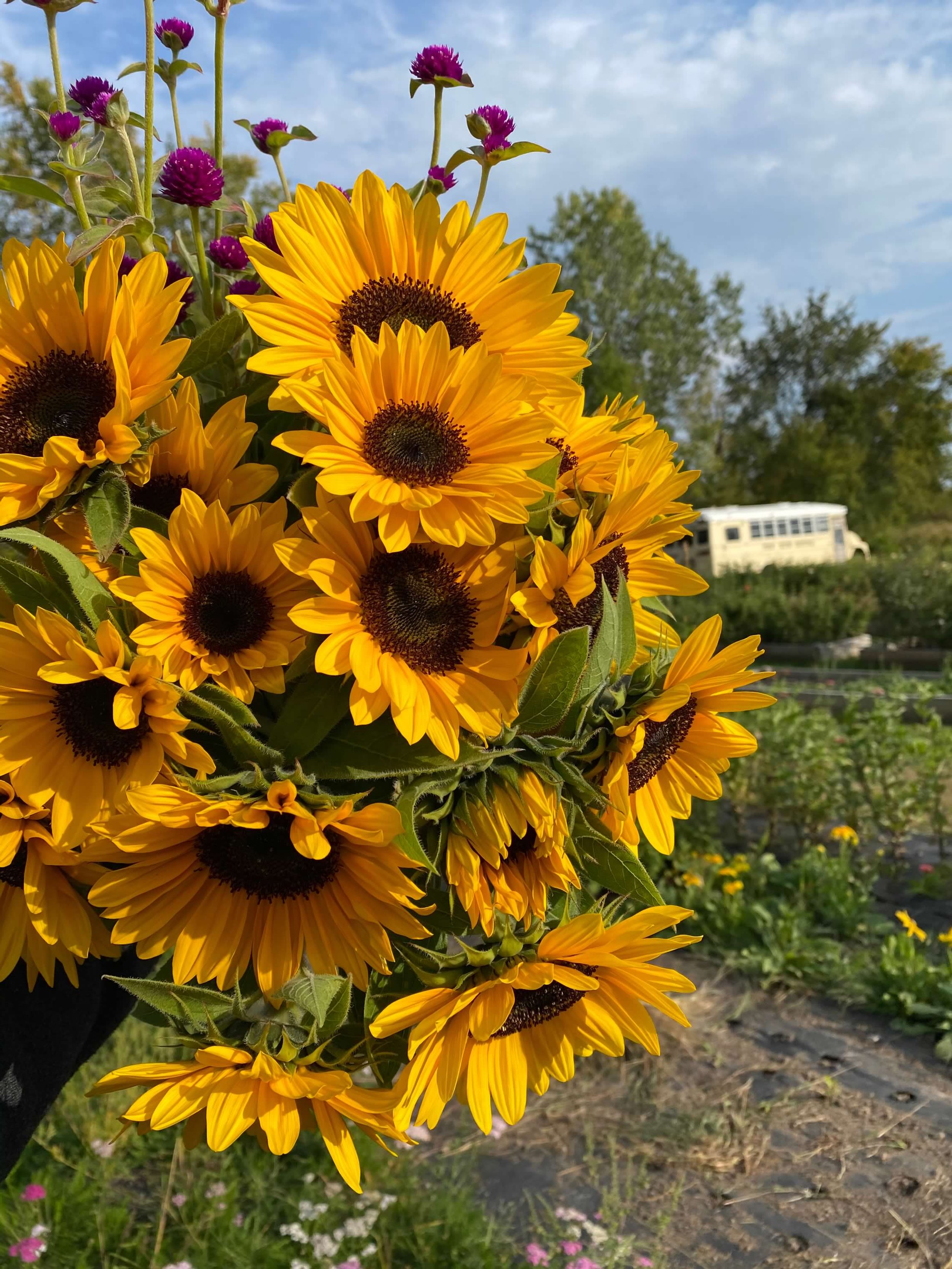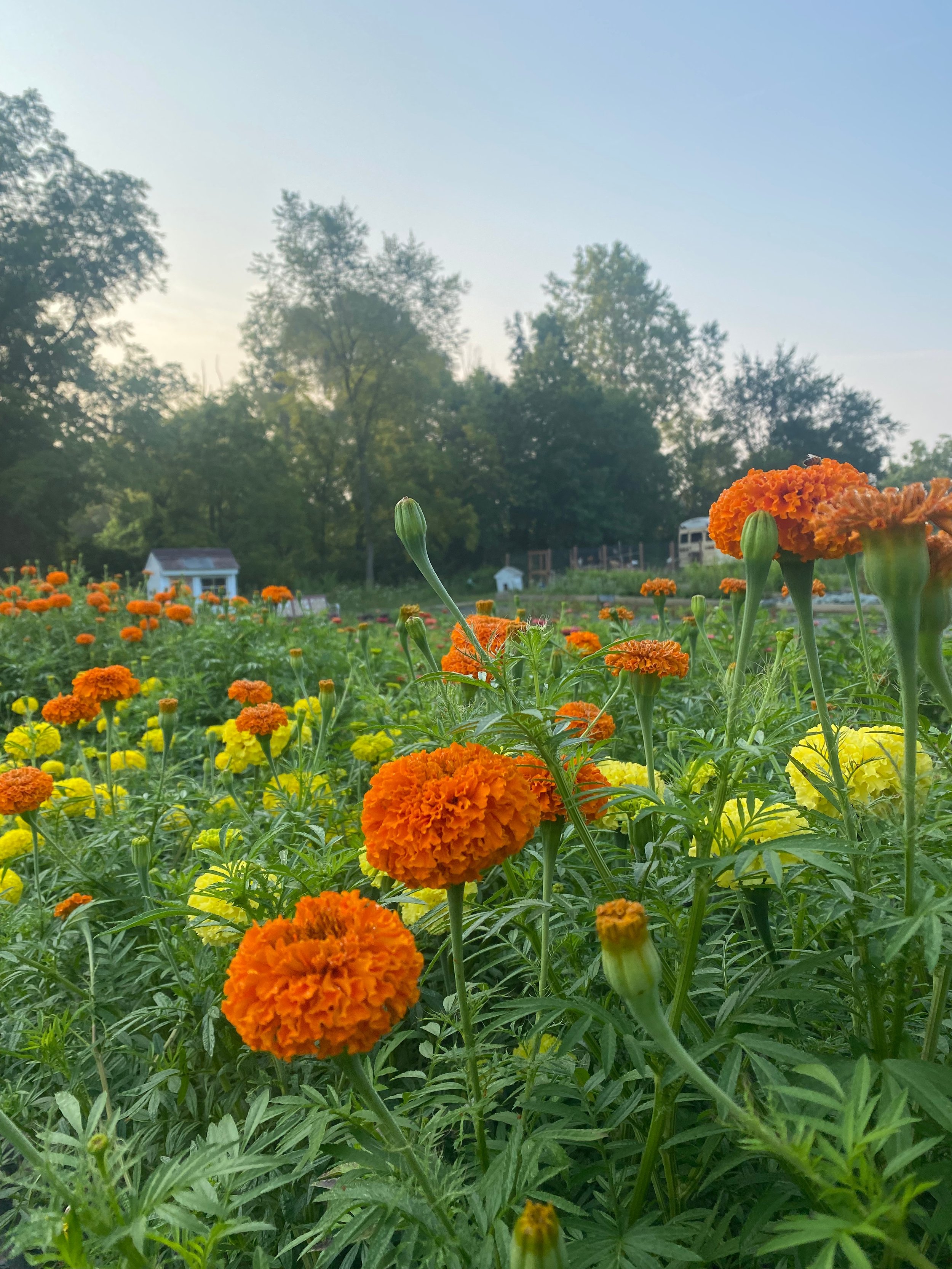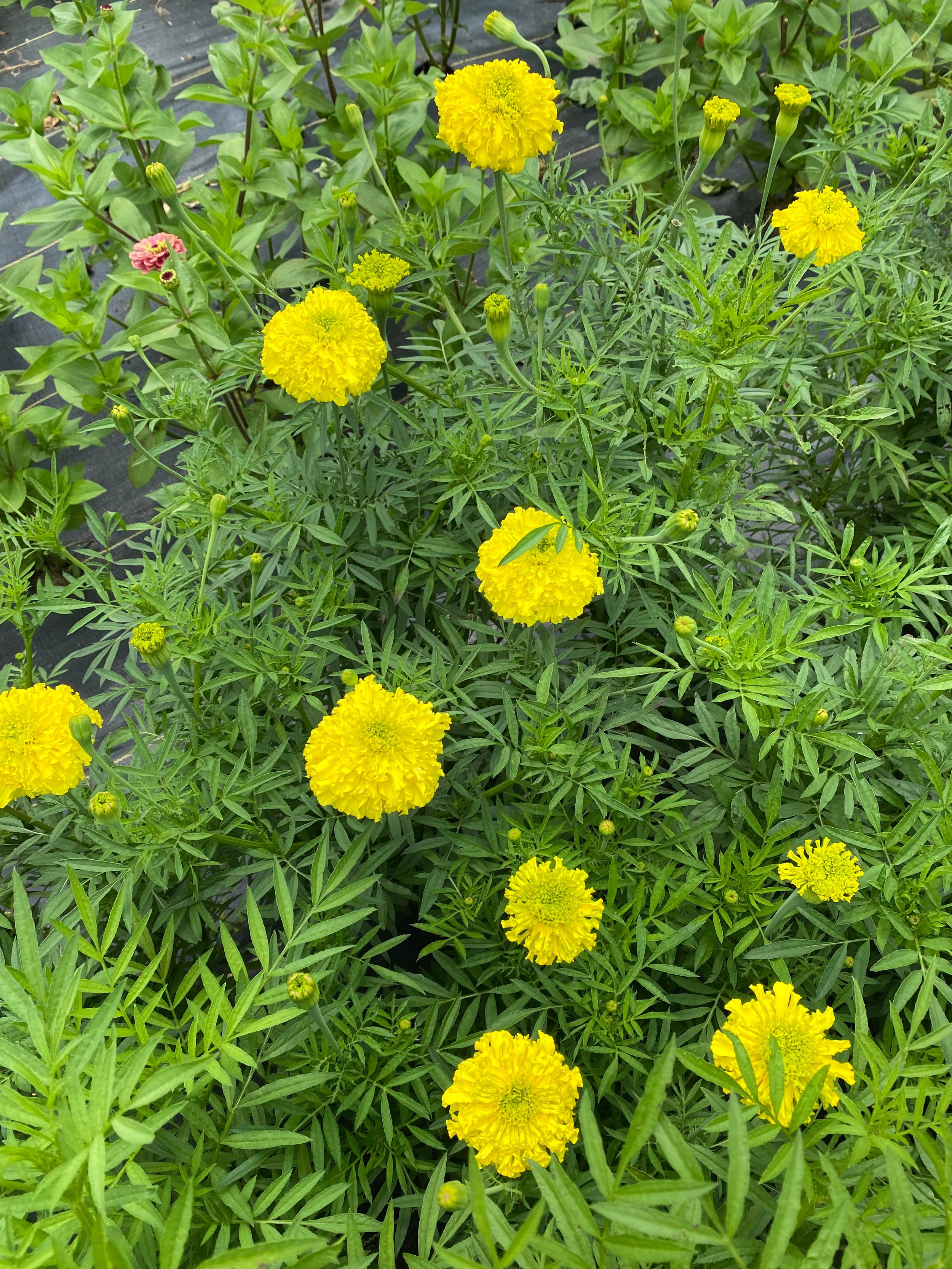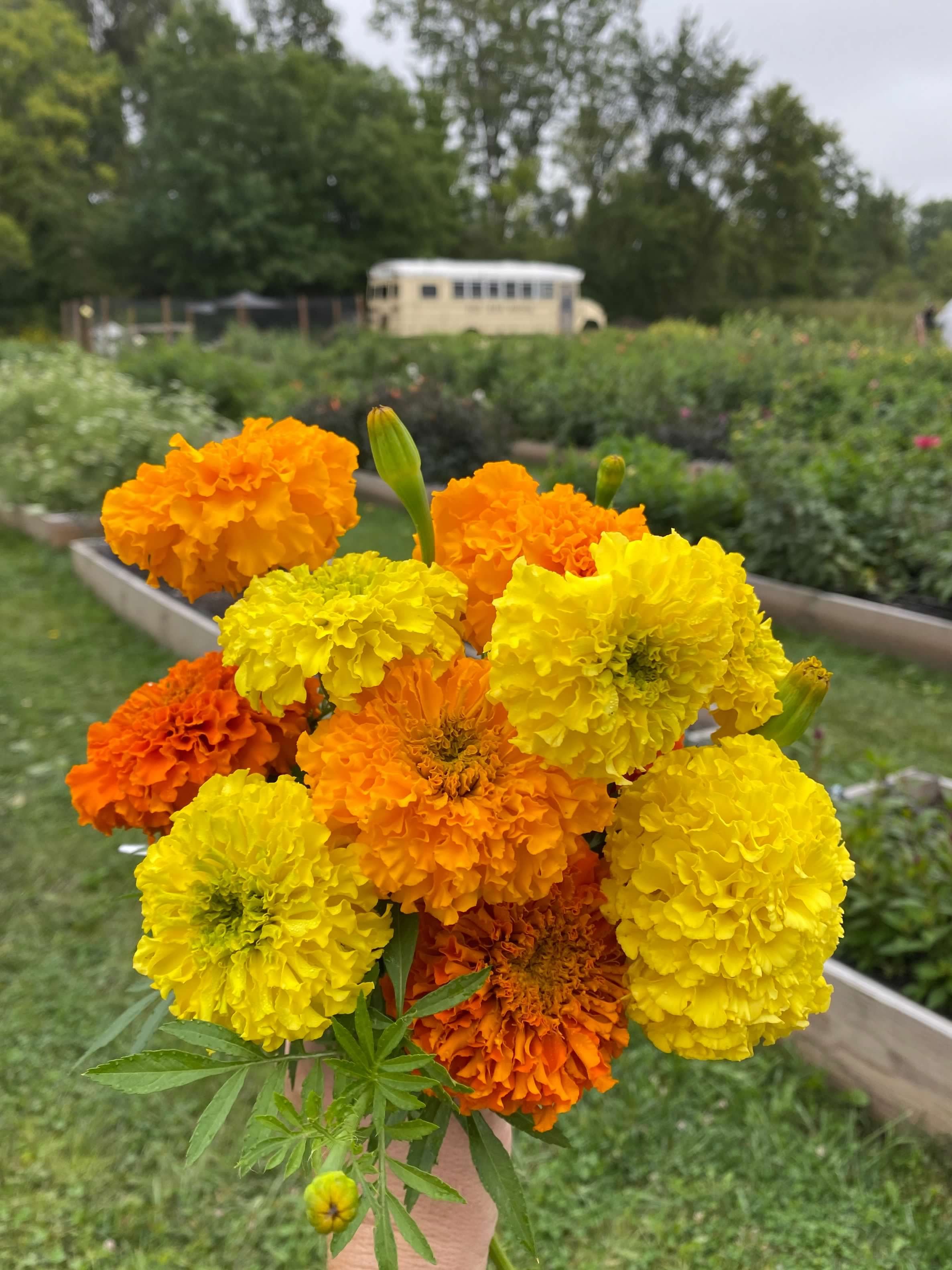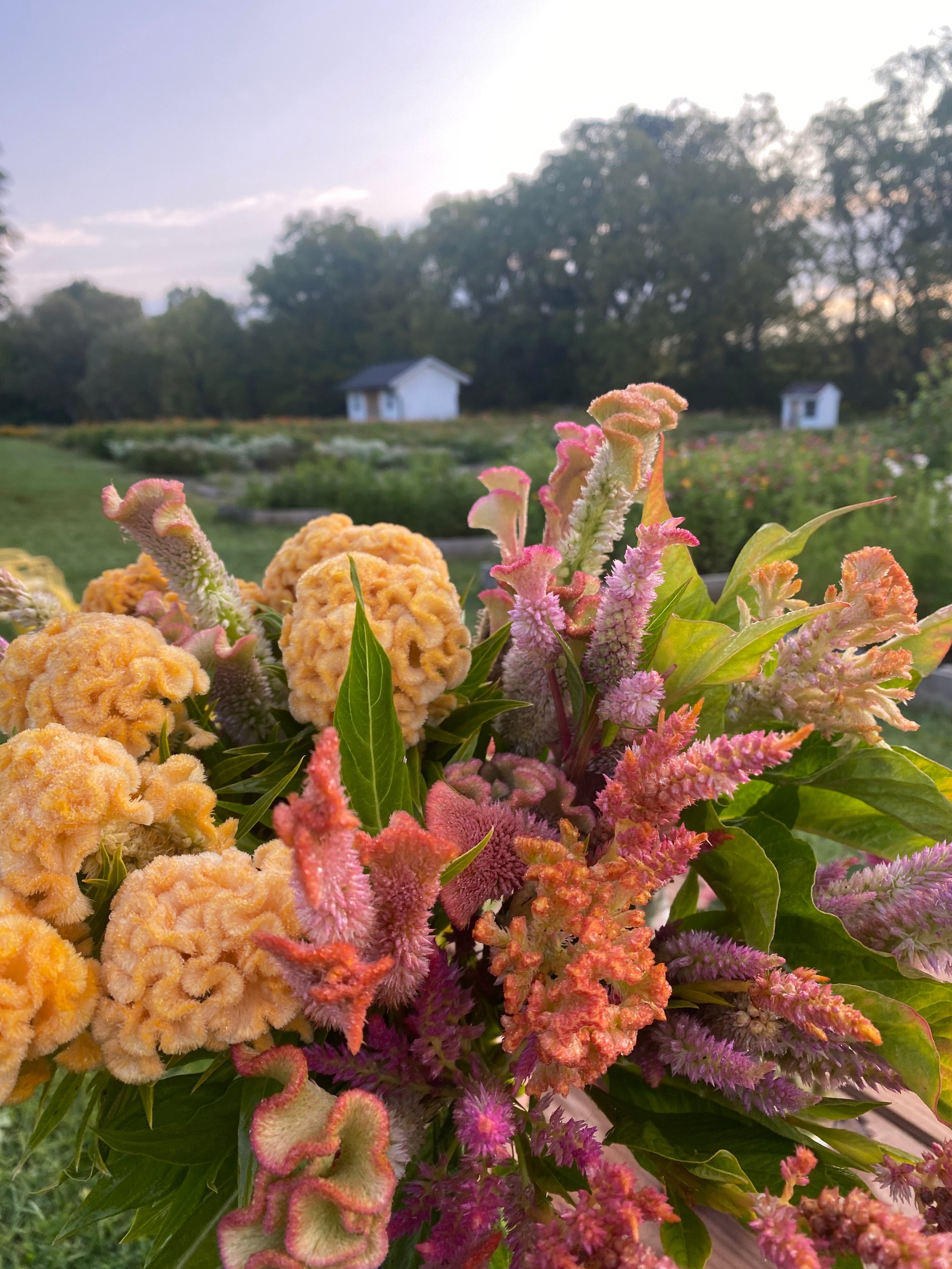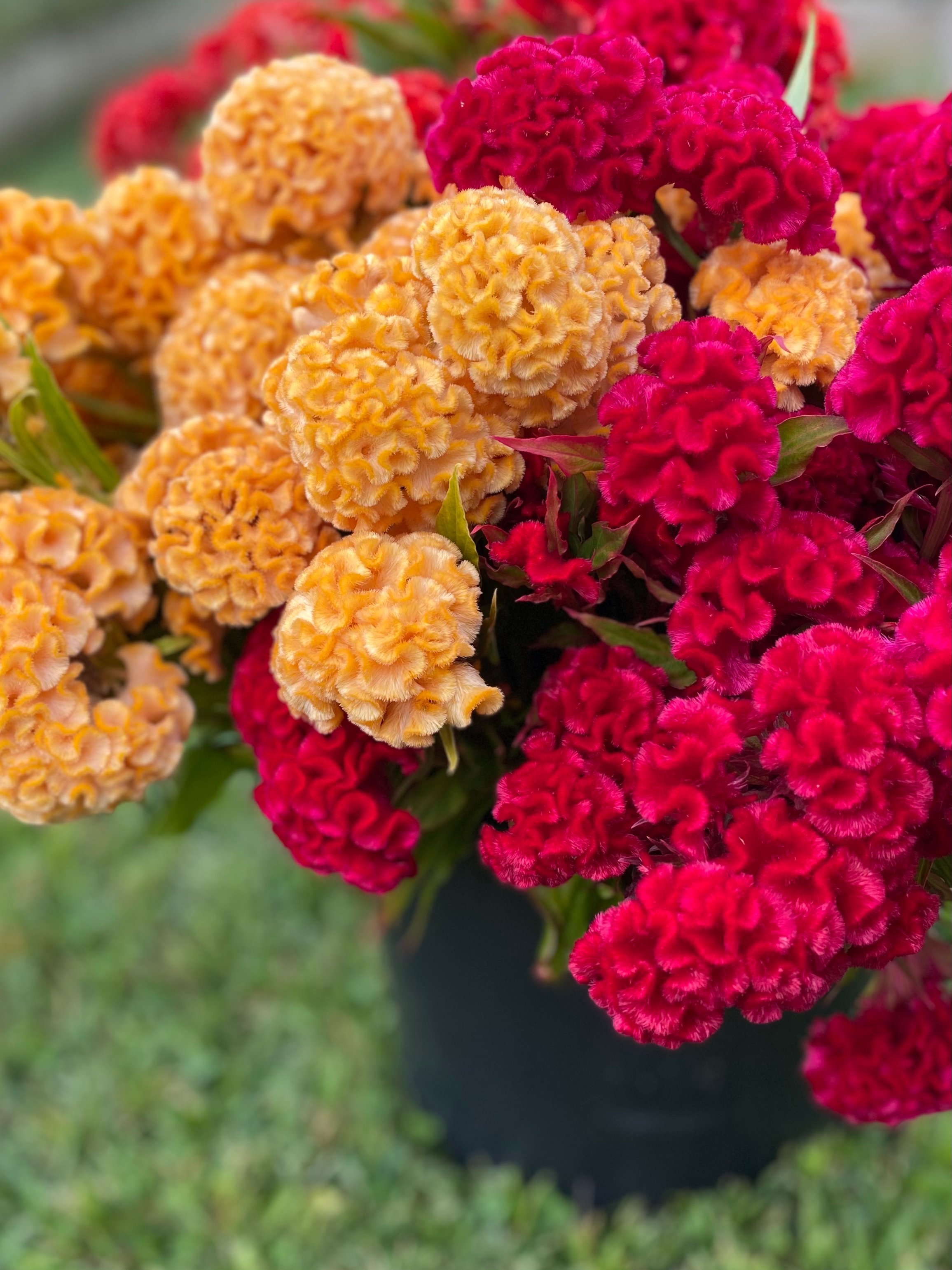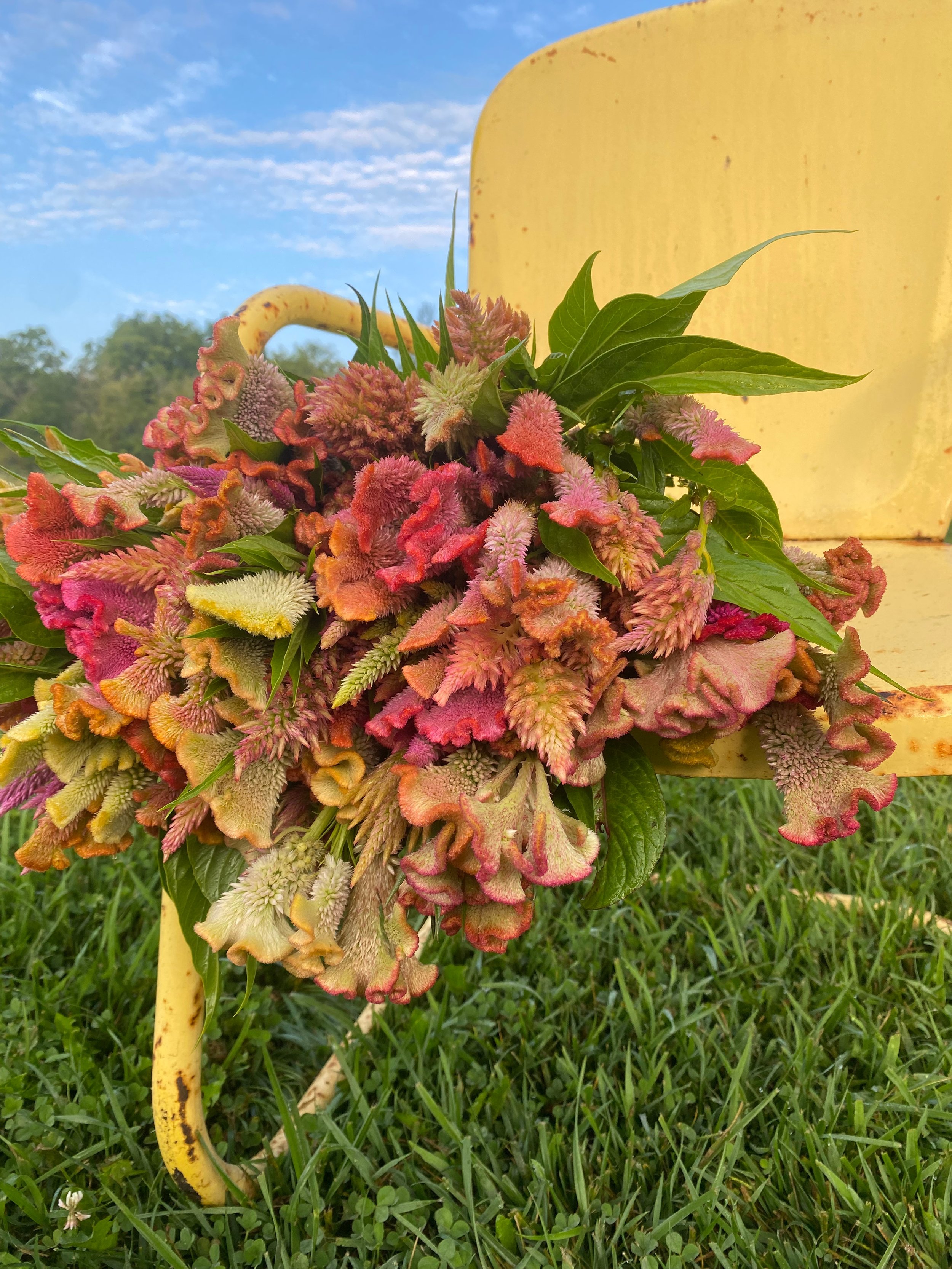10 Essential Annual Cut Flowers to Grow on Your Flower Farm
Choosing cut flower varieties to grow is one of the most exciting things about being a flower farmer. But when choosing seeds, it’s very easy to get overwhelmed by the options and just choose the flowers you think are the prettiest. It’s also easy to feel like you need everything — I know, I’ve been there!
But what’s more important than having a wide variety of flowers is having types that:
Are easy to grow
Produce a high yield
Are still beautiful
To keep things simple, here’s a list of 10 tried and true cut flowers that I love and have grown on my own flower farm.
1. Sunflowers
Nothing says summer quite like a sunflower! These cheerful flowers are easy to grow and come in a variety of sizes and colors. Sunflowers are so easy to grow because you can direct seed them in your garden and they really don’t need much else. They thrive in full sun and well-drained soil. Everyone loves sunflowers, plus they last in a vase for up to a week.
2. Snapdragons
Snapdragons are another favorite cut flower that come in a variety of colors and sizes. They are easy to grow from seed, even though the seeds are TINY. They typically prefer cool temperatures, but there are some varieties that can stand the heat. Snapdragons are perfect for adding height to a cut flower arrangement and are a great cut-and-come-again flower.
3. Zinnias
Zinnias are a must-have in any cut flower garden. Zinnias sometimes have a bad rap with new growers because they imagine the very bold, standard zinnia colors. However, there’s a huge variety of beautiful colors, shapes, and sizes — I even wrote a whole post about my favorite varieties. Zinnias are also super easy to grow from seed and can also be direct seeded in your garden. And as long as you keep cutting them, they’ll keep producing all summer long.
4. Marigolds
Marigolds are another type of classic cut flower. Similar to zinnias, they might be glossed over by the new flower grower because they’re used to seeing them in pots or garden beds. But cut flower varieties are great for beginners. They also come in many beautiful varieties and are super easy to grow.
5. Cosmos
Easy is the name of the game for new flower farmers and gardeners, and cosmos could definitely fight for a top spot on the easiest cut flowers to grow list. With daisy-like blooms that come in a wide range of colors, they're very resilient and can handle a wide range of growing conditions, from hot and dry summers to cooler temperatures in the fall. They can also last for up to a week in a vase.
6. Strawflower
You guessed it, strawflowers are easy to grow and regular bloomers, which is why you should consider growing them. Strawflowers have papery blooms in shades of pink, orange, yellow, and white. But in addition to being easy to grow, strawflowers are great for drying. They maintain their shape and color after being cut so you can save them and use them for wreaths and other dried floral arrangements.
7. Rudbeckia
Rudbeckia is also known as Black-eyed Susan, but it certainly comes in a larger variety of colors and shapes than the typical Black-eyed Susan that may come to mind. As you probably expected by now, this is an easy-to-grow and easy-to-maintain cut flower. These beauties bloom all summer long and the colors look great in late summer and autumn bouquets.
8. Celosia
Celosia, also known as cockscomb, is a unique cut flower that comes in a variety of bright colors. They prefer full sun and well-drained soil and are easy to grow from seed. Celosia make great cut flowers and can last up to a week in a vase.
9. Amaranth
Not your typical flower, amaranth is actually a grain. And it makes a beautiful filler. These tall, dramatic plants come in a range of colors, from deep burgundies and purples to bright pinks and greens, and their spiky, feathery blooms make a bold statement in any bouquet or arrangement. They also create stunning visual interest by providing texture in arrangements.
10. Basil
Basil? Isn’t that for food? Yes, but it’s also an amazing addition to mixed arrangements! You probably already know that it smells amazing, but it also is a great filler. When grown for cutting, it produces small white flowers that look great with just about any flower. Basil is also incredibly prolific and will produce plenty of stems throughout the summer.
Remember, working smarter not harder is a great skill when it comes to growing cut flowers. By focusing on easy-to-grow, high-yield, and beautiful varieties, you can reduce unnecessary stress and maximize results.
Click here for a free 28-page guide covering best practices for these flowers, from seeding and germination to pinching and harvesting.
Learn the top five mistakes new cut flower farmers often make.
By being aware of these pitfalls, you'll grow your business faster, save valuable time, and reduce unnecessary expenses. Get your copy now and take the first step towards a successful and profitable flower farm!




